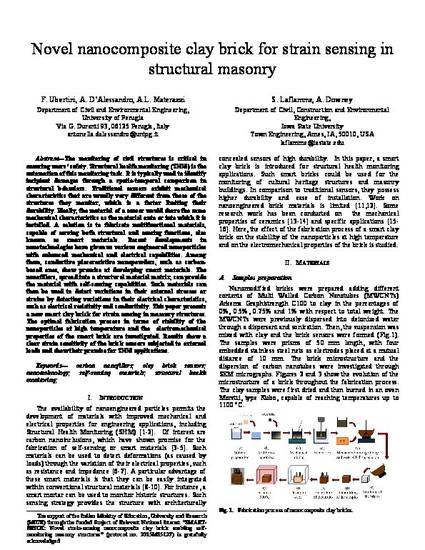
The monitoring of civil structures is critical in ensuring users' safety. Structural health monitoring (SHM) is the automation of this monitoring task. It is typically used to identify incipient damages through a spatio-temporal comparison in structural behaviors. Traditional sensors exhibit mechanical characteristics that are usually very different from those of the structures they monitor, which is a factor limiting their durability. Ideally, the material of a sensor would share the same mechanical characteristics as the material onto or into which it is installed. A solution is to fabricate multifunctional materials, capable of serving both structural and sensing functions, also known as smart materials. Recent developments in nanotechnologies have given us various engineered nanoparticles with enhanced mechanical and electrical capabilities. Among them, conductive piezoresistive nanopowders, such as carbon-based ones, show promise at developing smart materials. The nanofillers, spread into a structural material matrix, can provide the material with self-sensing capabilities. Such materials can then be used to detect variations in their external stresses or strains by detecting variations in their electrical characteristics, such as electrical resistivity and conductivity. This paper presents a new smart clay brick for strain sensing in masonry structures. The optimal fabrication process in terms of stability of the nanoparticles at high temperature and the electromechanical properties of the smart brick are investigated. Results show a clear strain sensitivity of the brick sensors subjected to external loads and show their promise for SHM applications.
Available at: http://works.bepress.com/simon_laflamme/77/

This is a manuscript of a proceeding published as Ubertini, F., A. D'Alessandro, A. L. Materazzi, S. Laflamme, and A. Downey. "Novel nanocomposite clay brick for strain sensing in structural masonry." In Environment and Electrical Engineering and 2017 IEEE Industrial and Commercial Power Systems Europe (EEEIC/I&CPS Europe), 2017 IEEE International Conference on, pp. 1-4. IEEE, 2017. DOI: 10.1109/EEEIC.2017.7977598. Posted with permission.